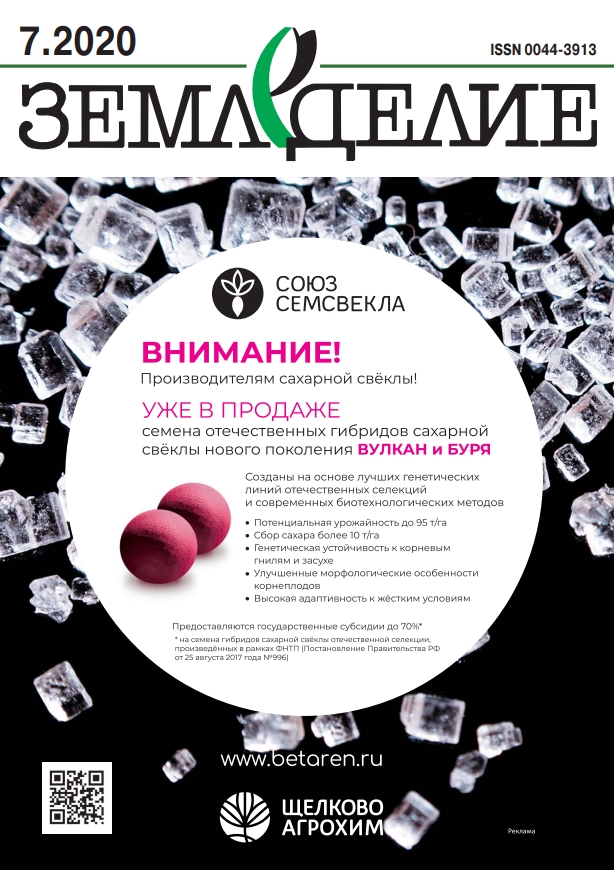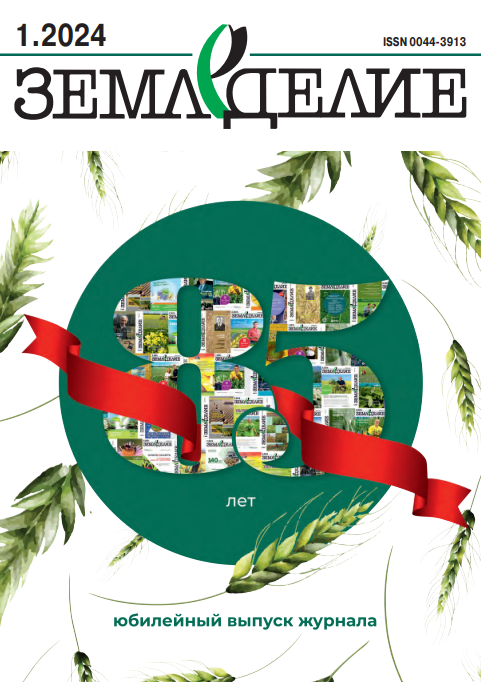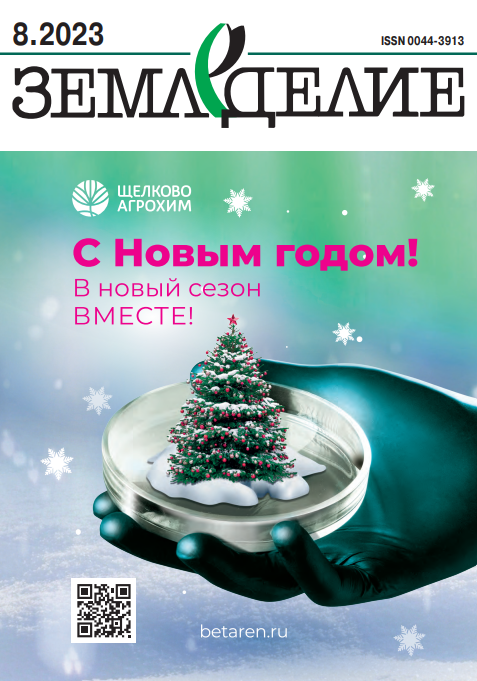Сравнительная характеристика урожайности и количества белка в зерне сортов озимой пшеницы и тритикале на Дону
doi: 10.24411/0044-3913-2020-10705
УДК631.5:633.11
А. И. ГРАБОВЕЦ, доктор сельскохозяйственных наук, член-корреспондент РАН, главный научный сотрудник (e-mail: grabovets_ai@ mail.ru)
К. Н. БИРЮКОВ, кандидат сельскохозяйственных наук, ведущий научный сотрудник
М. А. ФОМЕНКО, доктор сельскохозяйственных наук, главный научный сотрудник
Федеральный Ростовский аграрный научный центр, ул. Институтская, 1, пос. Рассвет, Аксайский р-н, Ростовская обл., 346735, Российская Федерация
Исследования выполняли в 2010–2019 гг. в Ростовской области с целью сравнения урожайности и содержания белка в зерне озимой пшеницы и тритикале для обоснования целесообразности возделывания тритикале. Сравнивали урожайность этих культур в конкурсном сортоиспытании при посеве по пару и зернобобовым предшественникам. Параллельно оценивали реакцию пшеницы и тритикале по пару на разные сроки сева (25 августа, 5, 10 и 25 сентября, 5 октября), а при поздних сроках сева (5 и 15 октября) оценивали две номы высева (4,0 и 5,5 млн всхожих семян/ га), сравнивали разные агрофона (контроль без удобрений, N40, N47P19, N70, N12P52, N52P52, N59P71, N82P52, N24P104, N64P104, N71P123, N94P104). В конкурсном испытании урожайность тритикале превышала величину этого показателя у пшеницы при посеве по пару на 1,66 т/га, по зернобобовым – на 0,7 т/га. В опыте со сроками сева сбор зерна тритикале, в сравнении с пшеницей, был больше на 0,75…1,89 т/га, при внесении удобрений – в среднем на 1,36 т/га. По среднемноголетним данным при перезимовке озимая пшеница выдерживала на узле кущения -18 °C, тритикале – -20…-21 °C. Потенциальная продуктивность в сравнимых условиях при возделывании пшеницы по оптимальной технологии составляла 10 т/ га, тритикале – 12…13 т/га. По содержанию белка в зерне пшеница (14,1 % в среднем по всем опытам) превышала тритикале на 0,9 %. Внесение удобрений под тритикале снижало этот разрыв до 0,6 %. Проведение поздних некорневых азотных подкормок карбамидом способствовало увеличению содержания белка в зерне тритикале до 14 %, клейковины – до 25 %. В сравнимых условиях из-за большей урожайности сбор белка у тритикале составил 1010 кг/га, у пшеницы 877 кг/га.
Ключевые слова: пшеница (Triticum aestivum L.), тритикале (×Triticosecale Wittmack), урожайность, зерно, срок сева, удобрение, белок.
Для цитирования: Грабовец А. И., Бирюков К. Н., Фоменко М. А. Сравнительная характеристика урожайности и количества белка в зерне у сортов озимой пшеницы и тритикале на Дону // Земледелие. 2020. № 7. С. 25–28. doi: 10.24411/0044-3913-2020-10705.
Comparative characteristics of yield and protein content in winter wheat and triticale grain in the Don region
A. I. Grabovets, K. N. Biryukov, M. A. Fomenko
Federal Rostov Agrarian Scientific Center, ul. Institutskaya, 1, pos. Rassvet, Aksaiskii r-n, Rostovskaya obl., 346735, Russian Federation
Abstract. The studies were carried out in 2010–2019. in the Rostov region in order to compare the yield and protein content in grain of winter wheat and triticale to substantiate the feasibility of cultivating triticale. The yield of these crops was compared in a competitive variety test when they were sown after fallow and legumes forecrops. At the same time, we assessed the reaction of wheat and triticale, sown after fallow, to different sowing dates (August 25, September 5, 10 and 25, October 5). At the late sowing dates (October 5 and 15), we assessed two seeding rates (4.0 and 5.5 million germinating seeds per hectare) and compared different agricultural backgrounds (the control without fertilizers, N40, N47P19, N70, N12P52, N52P52, N59P71, N82P52, N24P104, N64P104, N71P123, N94P104). In a competitive test, the yield of triticale exceeded the value of this indicator for wheat by 1.66 t/ha, when the cultures were sown after fallow, and by 0.7 t/ha when they were placed after legumes. In the experiment with the sowing dates, the harvest of triticale grain, in comparison with wheat, was higher by 0.75–1.89 t/ha, with fertilization – on average by 1.36 t/ha. According to long-term data, winter wheat did not die at temperatures in the tillering node up to -18 С, triticale – at minus 20 - minus 21 С. Potential productivity under comparable conditions with cultivation using the optimal technology was 10 t/ ha for wheat and 12–13 t/ha for triticale. In terms of the protein content in grain, wheat (14.1% on average for all experiments) exceeded triticale by 0.9%. Triticale fertilizing reduced this gap to 0.6%. Carrying out late foliar nitrogen fertilization with urea increased the protein content in triticale grain up to 14%, gluten content – up to 25%. Under comparable conditions, due to the higher yield, the protein output for triticale was 1010 kg/ ha, for wheat – 877 kg/ha. Keywords: wheat (Triticum aestivum L.); triticale (×Triticosecale Wittmack); productivity; grain; sowing date; fertilizer; protein.
Keywords: wheat, triticale, productivity, grain, sowing dates, fertilizers, protein.
Author details: A. I. Grabovets, D. Sc. (Agr.), Corresponding member of the RAS, chief research fellow (e-mail: grabovets_ai@ mail.ru); K. N. Biryukov, Cand. Sc. (Agr.), leading research fellow; M. A. Fomenko, D. Sc. (Agr.), chief research fellow.
For citation: Grabovets AI, Biryukov KN, Fomenko MA. [Comparative characteristics of yield and protein content in winter wheat and triticale grain in the Don region]. Zemledelie. 2020;(7):25-8. Russian. doi: 10.24411/0044- 3913-2020-10705.










